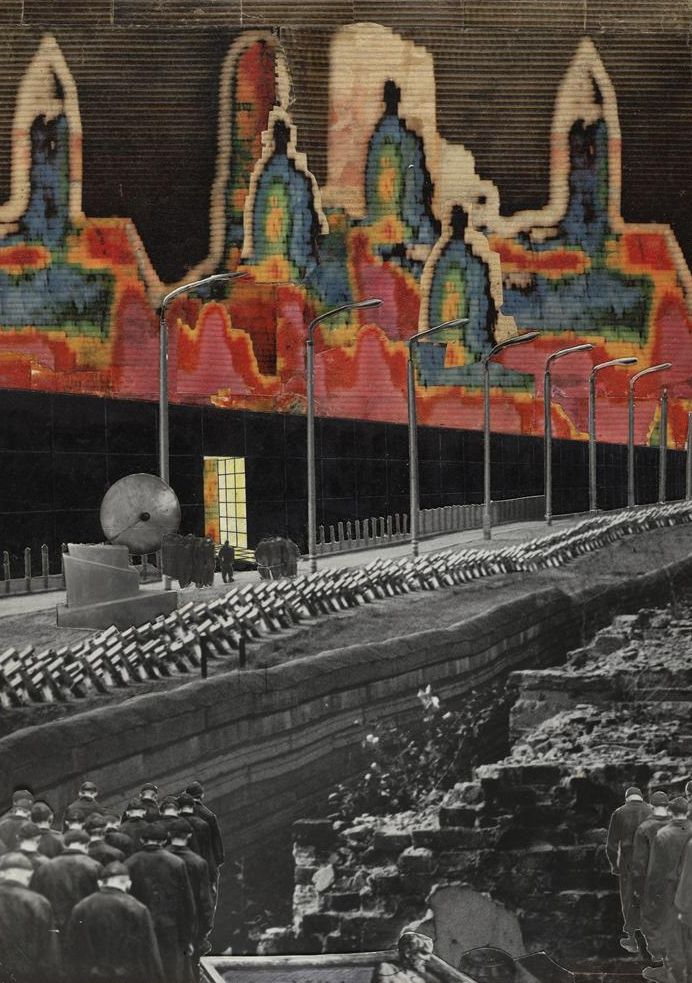"The Berlin Wall became the fundamental element of the project entitled Exodus, or the Voluntary Prisoners of Architecture, which Koolhaas prepared with Zenghelis for the competition La citta come anbiente significante, held in the autumn of 1971 by the Associazione per il Disegno Industrialee of Milan, organized with the magazine "Casabella". Some of the project panels were done in collaboration with Madelon Vriesendorp, Rem's girlfriend, and Zoe Zenghelis, Elia's [first] wife. both painters."
Roberto Gargiani, Rem Koolhaas/OMA: The Construction of Merveilles (2008), p. 6.
| |

| |
Exodus, or the voluntary prisoners of architecture
Rem Koolhaas, Madelon Vreisendorp, Elia Zenghelis, and Zoe Zenghelis (1971)
Once, a city was divided in two parts. One part became the Good Half, the other part the Bad Half.
The inhabitants of the Bad Half began to flock to the good part of the divided city, rapidly swelling into an urban exodus.
If this situation had been allowed to continue forever, the population of the Good Half would have doubled, while the Bad Half would have turned into a ghost town.
After all attempts to interrupt this undesirable migration had failed, the authorities of the bad part made desperate and savage use of architecture: they built a wall around the good part of the city, making it completely inaccessible to their subjects.
The Wall was a masterpiece.
Originally no more than some pathetic strings of barbed wire abruptly dropped on the imaginary line of the border, its psychological and symbolic effects were infinitely more powerful than its physical appearance.
The Good Half, now glimpsed only over the forbidding obstacle from an agonizing distance, became even more irresistible.
Those trapped, left behind in the gloomy Bad Half, became obsessed with vain plans for escape. Hopelessness reigned supreme on the wrong side of the Wall.
As so often before in this history of mankind, architecture was the guilty instrument of despair.
Architecture
It is possible to imagine a mirror image of this terrifying architecture, a force as intense and devastating but used instead in the service of positive intentions.
Division, isolation, inequality, aggression, destruction, all the negative aspects of the Wall, could be the ingredients of a new phenomenon: architectural warfare against undesirable conditions, in this case London. This would be an immodest architecture committed not to timid improvements but to the provision of totally desirable alternatives.
The inhabitants of this architecture, those strong enough to love it, would become its Voluntary Prisoners, ecstatic in the freedom of their architectural confines.
Contrary to modern architecture and its desperate afterbirths, this new architecture is neither authoritarian nor hysterical: it is the hedonistic science of designing collective facilities that fully accommodate individual desires.
From the outside this architecture is a sequence of serene monuments; the life inside produces a continuous state of ornamental frenzy and decorative delirium, an overdose of symbols.
This will be an architecture that generates its own successors, miraculously curing architects of their masochism and self-hatred.
|
